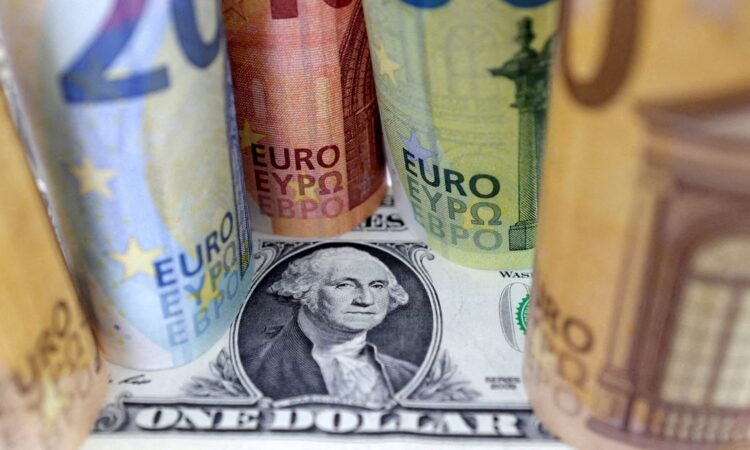
SINGAPORE, March 16 (Reuters) – The safe haven U.S. dollar and Japanese yen found support on Thursday from renewed fears of a global banking crisis, after contagion from the implosion of U.S.-based Silicon Valley Bank spread across the Atlantic to Swiss bank Credit Suisse.
Credit Suisse (CSGN.S) said on Thursday it would borrow up to $54 billion from the Swiss National Bank to shore up liquidity and investor confidence, after its shares on Wednesday plunged as much as 30%, which prompted the Swiss central bank to throw a financial lifeline to the embattled lender.
While the news helped to stem some heavy selling in Asia trade, market sentiment remained fragile as worries mount that the recent stress unfolding across banks in the U.S. and Europe could be a harbinger of a widespread systemic crisis.
That sent traders flocking to the greenback and yen, which are considered safer bets in times of turmoil, keeping the two currencies buoyed on Thursday.
The yen jumped more than 0.5% to extend Wednesday’s 0.6% gain, and last stood at 132.80 per dollar.
Latest Updates
View 2 more stories
Against the Swiss franc , the dollar pared some of its previous session’s 2.15% surge – the largest daily gain since 2015 – but kept the Swissie pinned near a one-week low.
“Now, Credit Suisse has the clout of (the) Swiss National Bank covering its back, which is a central bank that doesn’t not mess around in the time of crisis,” said Matt Simpson, senior market analyst at City Index.
“So ultimately, I think this is a good thing for market sentiment. I’m just not sure if or when investors will draw the same conclusion with all the emotion in the air.”
Credit Suisse, which is battling to recover from a string of scandals that have undermined the confidence of investors and clients, was the latest casualty to be caught up in a crisis of confidence after the collapse of SVB last week.
SVB’s shutdown on Friday, followed two days later by the collapse of Signature Bank, forced U.S. President Joe Biden to rush out assurances the financial system was safe and prompted emergency U.S. measures giving banks access to more funding.
“Given the elevated uncertainties and concerns about broader financial contagion, the dollar, as well as the yen, will be the main beneficiaries because of safe haven demand,” said Carol Kong, a currency strategist at Commonwealth Bank of Australia (CBA).
Elsewhere, the euro was nursing deep losses on Thursday, last rising 0.27% to $1.0607, after tumbling 1.4% in the previous session. Likewise, sterling gained 0.14% to $1.20725, having fallen close to 0.9% on Wednesday.
Against a basket of currencies, the U.S. dollar index was last 0.16% lower at 104.48, paring some of its roughly 1% gain in the previous session.
Investors remained on tenterhooks as they await further clarity on how widespread the fallout could be, with rescue measures from authorities doing little to soothe heightened fears thus far.
The focus has also turned to how central banks will navigate their paths on future rate hikes, with policymakers left in a bind on how much further they should raise rates to stem inflation without triggering a financial sector shakeout.
The European Central Bank (ECB) meets later on Thursday and is due to announce its interest rate decision following the meeting.
Ahead of that, traders have quickly moved to scale back their bets on a 50-basis-point rate hike, as the rout in Credit Suisse shares fanned concerns about the health of Europe’s banks.
Two supervisory sources told Reuters that the ECB has contacted banks on its watch to quiz them on their exposure to Credit Suisse.
“There is certainly a risk that the ECB will not follow through with its pre-commitment of a 50-basis-point hike because of financial stability concerns,” said CBA’s Kong.
“It will definitely be a tough call for any major central bank to stick with its tightening path.”
Elsewhere, the risk-sensitive Australian and New Zealand dollars were struggling to make headway after having slid close to 1% each on Wednesday.
The Aussie was last 0.23% higher at $0.6637, while the kiwi fell 0.42% to $0.6162, further pressured by weak economic data released on Thursday which showed New Zealand’s economy shrinking in the fourth quarter.
Reporting by Rae Wee; Editing by Sonali Paul and Kim Coghill
Our Standards: The Thomson Reuters Trust Principles.




